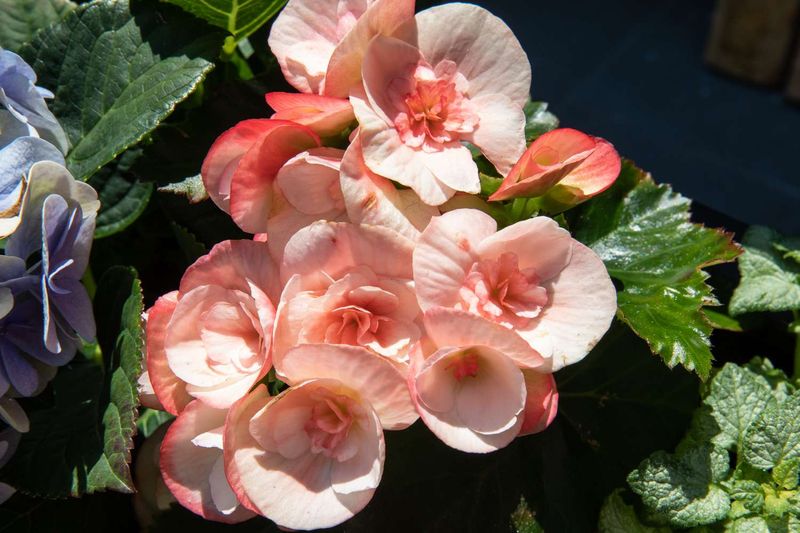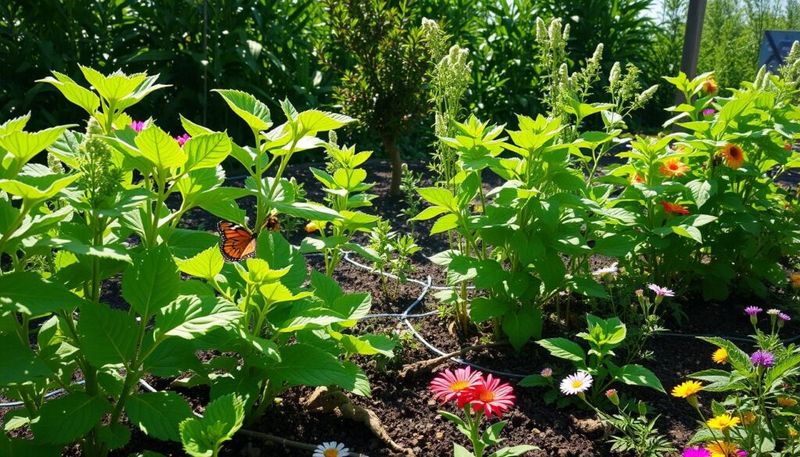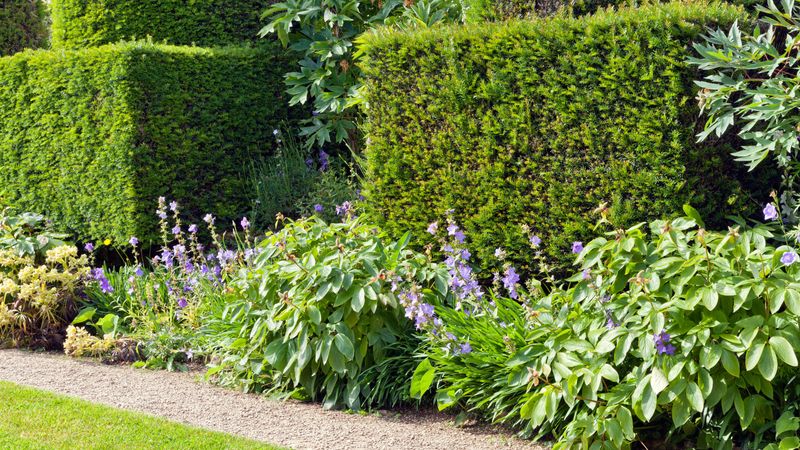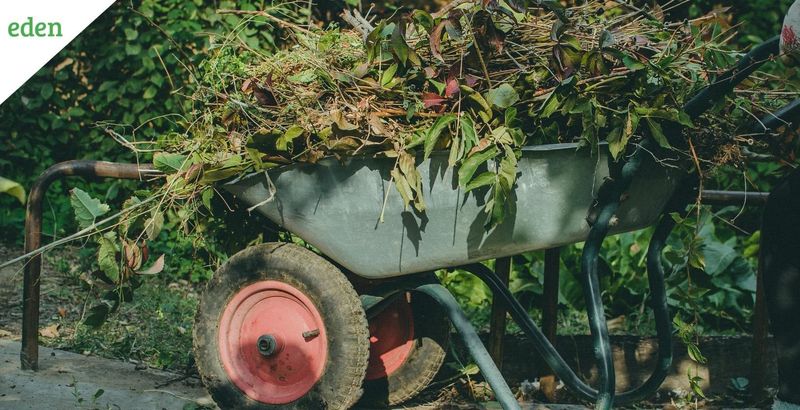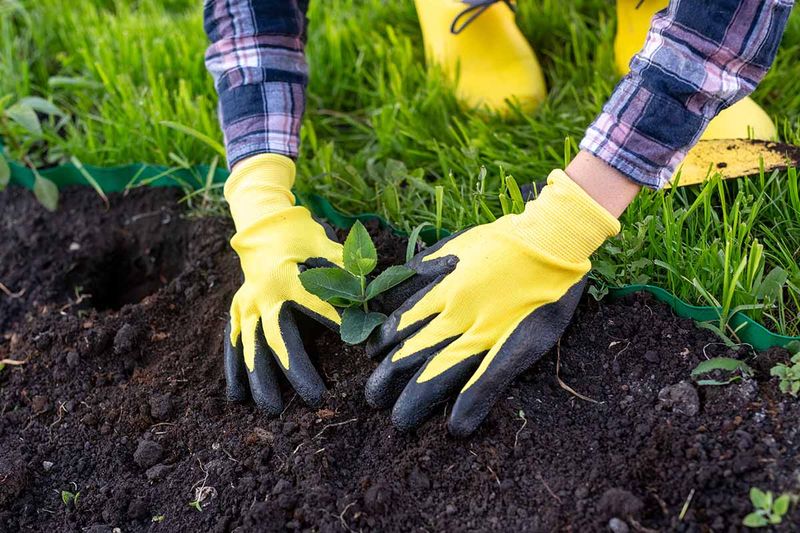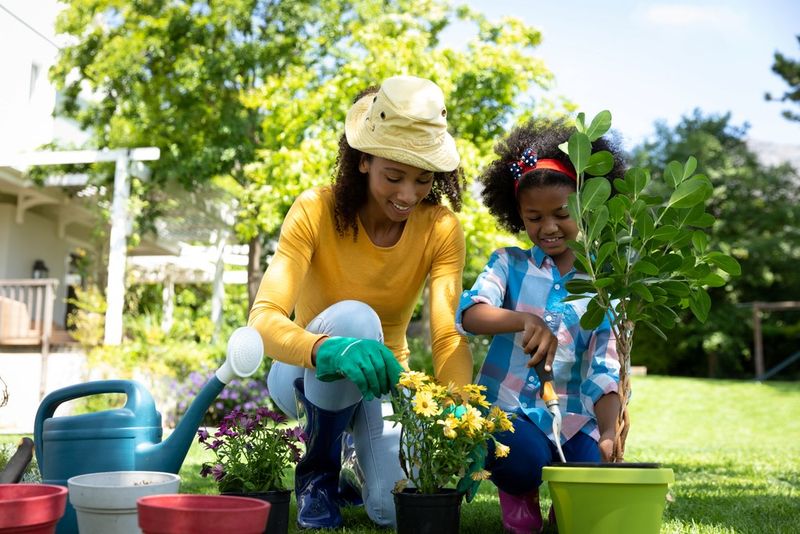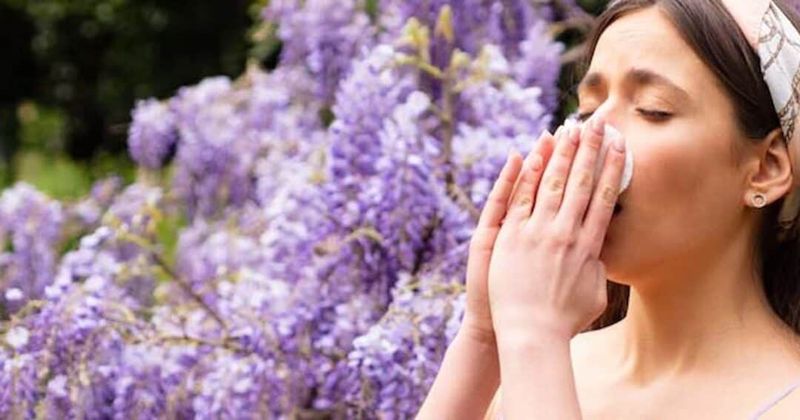Gardening should be a joy, not a sneezing session. Allergens in the garden can turn a delightful hobby into a sniffly nightmare. But fear not, with a little planning, your garden can be a sneeze-free sanctuary.
Let’s explore some practical tips to keep those pesky allergens at bay and enjoy your outdoor space to the fullest. From choosing the right plants to smart gardening practices, these 12 tips will help you maintain a garden that’s both beautiful and comfortable for allergy sufferers.
Read on to learn how to transform your garden into an allergen-free oasis.
1. Choose Low-Pollen Plants
Imagine a garden brimming with color, yet void of the sniffles. Opt for low-pollen plants that attract insects rather than relying on the wind for pollination. Begonias, with their lush blooms, and impatiens, offering soft, pastel petals, are excellent choices.
Petunias bring a splash of color, while snapdragons add a playful touch with their unique flowers. Pansies provide a cheerful face, making them a favorite among gardeners.
These selections not only reduce allergens but also invite beneficial insects like bees and butterflies, enhancing your garden’s ecological balance. A perfect blend of beauty and allergy relief.
2. Go for Female Plants Over Male
In the world of plants, gender matters more than you might think. Male plants are notorious for their pollen-producing prowess, while female plants quietly trap it. When choosing new additions for your garden, ask about the plant’s gender.
Many landscape trees are male, contributing to the pollen problem. Opting for female plants can significantly reduce the airborne allergens in your garden. Besides their practical benefits, female plants often boast beautiful foliage and flowers, adding aesthetic appeal.
This simple switch can make a world of difference for allergy sufferers, creating a more comfortable garden environment.
3. Plant Smart with Barriers
Strategic planting can be your best defense against airborne allergens. Think of hedges, fences, and tall plants as your garden’s protective barriers. These natural windbreaks can help reduce the amount of pollen that drifts into your space.
Not only do they provide a functional benefit, but they also add structure and height to your garden layout. Consider plants like tall grasses or dense shrubs that can serve as effective barriers.
By planning your garden’s layout with these elements, you’ll enjoy a more pleasant and allergen-reduced outdoor space, showcasing both clever design and natural beauty.
4. Keep Your Garden Tidy
A tidy garden is not just aesthetically pleasing; it’s also less likely to harbor allergens. Regularly removing dead leaves, moldy mulch, and spent blooms is crucial in keeping mold spores at bay.
Mold can be a significant irritant for allergy sufferers, and keeping your garden clean minimizes its presence. This task not only enhances the visual appeal of your garden but also promotes healthier plant growth.
Spend some time each week tidying up your garden, and you’ll breathe easier knowing you’ve reduced potential allergens. A clean garden is a happy garden, free from unnecessary sniffles.
5. Wear Protective Gear
Gardening doesn’t have to come with a side of sniffles if you gear up wisely. Wearing protective clothing is a simple yet effective way to shield yourself from allergens.
Slip on gloves to protect your hands, don a long-sleeved shirt and pants to cover your skin, and add sunglasses to shield your eyes. For those particularly sensitive to pollen, a pollen-filtering mask can be a game-changer.
With the right gear, you can enjoy your garden tasks without the discomfort of allergy symptoms. It’s all about dressing the part for a sneeze-free gardening experience.
6. Garden at the Right Time
Timing is everything, especially when it comes to gardening with allergies. Pollen counts are typically highest in the early morning, so plan your gardening sessions for the late afternoon or after a refreshing rain shower.
These times offer the double benefit of lower pollen levels and cooler temperatures, making your gardening experience more enjoyable. Avoid dry, windy days when pollen is likely to be airborne.
By aligning your gardening schedule with nature’s rhythms, you’ll minimize your exposure to allergens and make the most of your time outdoors, enjoying a more pleasant gardening experience.
7. Shower and Change Clothes After Gardening
After a fulfilling day in the garden, it’s essential to wash away the remnants of your outdoor adventures. Pollen clings to your skin and clothes, and bringing it into your home can trigger allergy symptoms.
A quick shower not only refreshes you but also removes pollen from your body. Changing into clean clothes further ensures that allergens stay outside where they belong.
This simple post-gardening routine can make a significant difference for allergy sufferers, allowing you to enjoy your garden without bringing the sneezes indoors. It’s a small step with big benefits for your comfort.
8. Use Mulch That Doesn’t Mold
Mulch is a gardener’s friend, but some types can harbor mold, an unwelcome guest for allergy sufferers. If you’re sensitive to mold, consider alternatives to traditional bark mulch. Gravel or rubber mulch offers the same weed-suppressing benefits without the risk of mold growth.
Well-composted material can also be a good choice, as it breaks down slowly and evenly. These options not only keep your garden looking neat but also reduce the chances of allergens taking root. Choosing the right mulch can enhance your garden’s health and aesthetics while keeping it a comfortable space for everyone.
9. Clean Tools and Surfaces Regularly
Cleanliness extends beyond just tidying the garden. Regularly cleaning your gardening tools and surfaces prevents the buildup of pollen and mold, which can contribute to allergies. After each use, wipe down your gloves, pruners, and potting bench to ensure they remain free of allergens.
This practice not only extends the life of your tools but also creates a healthier gardening environment. By maintaining cleanliness in every aspect of your gardening routine, you’ll enjoy a more pleasant experience and reduce the potential for allergy flare-ups. It’s a simple habit with lasting benefits for your comfort.
10. Encourage Beneficial Insects
Beyond beauty, beneficial insects play a crucial role in your garden’s ecosystem. Encouraging pollinators like bees and butterflies helps with plant reproduction without the heavy pollen load of wind-pollinated plants.
Fill your garden with flowering herbs, such as lavender and rosemary, and native wildflowers to attract these helpful creatures. Not only do they boost your garden’s health, but they also provide a vibrant spectacle that delights the senses.
By fostering a habitat for beneficial insects, you contribute to biodiversity while keeping allergens to a minimum. Garden with nature, not against it, for a harmonious outdoor space.
11. Keep Lawn Grass Cut Short
A lush lawn is a homeowner’s pride, but if allergies are a concern, keep it closely trimmed. Long grass produces seed heads that release pollen, which can aggravate allergy symptoms.
Regular mowing not only keeps your lawn looking sharp but also reduces pollen production. For an even lower-allergen option, consider replacing traditional grass with ground covers like clover or creeping thyme, which don’t produce pollen in the same way.
These alternatives provide a green, lush appearance with less maintenance and fewer allergens. Maintain a beautiful, allergy-friendly lawn that invites enjoyment rather than discomfort.

